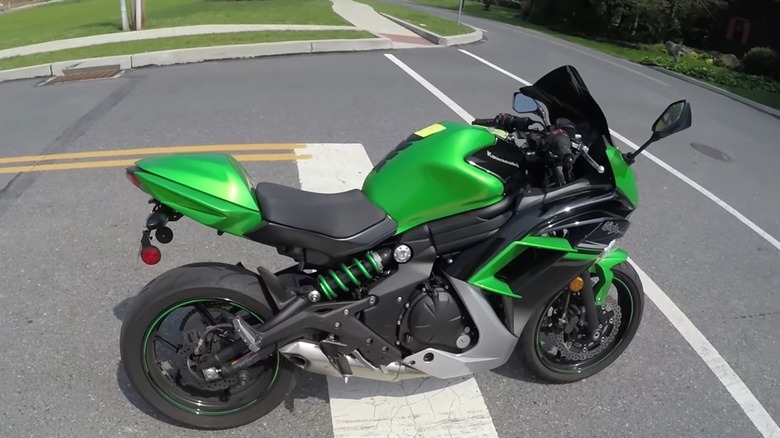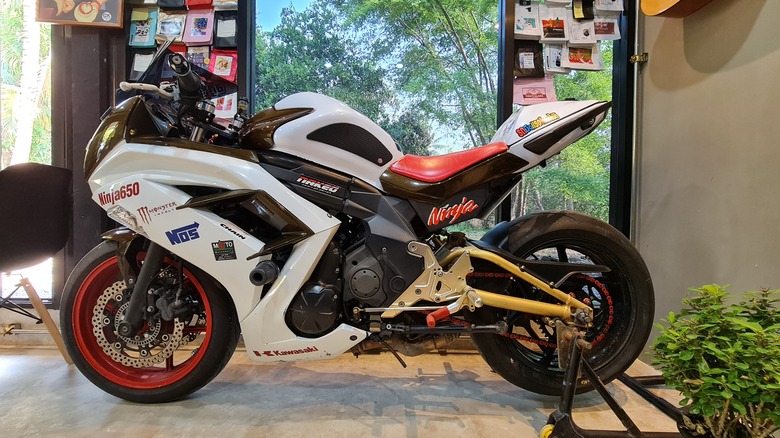All About The 2013 Kawasaki Ninja 650 Motorcycle
Since its 1984 debut, the moniker "Ninja" has been a prominent name in sport bikes. The Kawasaki Ninja is one of the most famous motorcycles ever made for a few reasons. Engineers at the Japanese motorcycle manufacturer have a history of pushing the envelope of performance and proving the enhanced capability of their machines on the track. One of the more interesting iterations arrived in 2013 with the Ninja 650.
The 2013 Ninja 650 looks incredibly sporty, but often takes new riders by surprise because it's actually comfortable. With a 4-stroke parallel-twin liquid-cooled engine, the Ninja 650 provides a thrilling throttle response and a more aggressive torque curve than its Honda CBR500R rival. This version of Ninja combines sharp looks, a robust engine, and comfortable design with an aggressive price point. For those trying to decide between the Kawasaki Ninja 400 vs. 650, there are several differences, with the 650 being one of the fastest Kawasaki motorcycles for seasoned riders.
Fast, ergonomic, and great for long rides or daily commutes
The brawny 649cc engine of the Ninja 650 produces a 0 to 60 mph time of just 3.5 seconds and a top speed of 130 mph. While not in the same league as a Supersport bike in terms of performance, the Ninja 650 is an ideal entry into the sport bike world.
Unfortunately, many sport bikes can wreak havoc on your body because performance is prioritized over comfort everywhere. Often, riders must conform to a steep lean toward the handlebars while dramatically bending their legs to utilize the footpegs. While this position makes sense regarding aerodynamics, it puts you into an awkward posture that can become unbearable without breaks in riding. Ergonomics is where the 2013 Kawasaki Ninja separates itself from the pack of other sport bikes.
First, the bike's suspension has been modified to offer a smoother ride rather than the standard "stiff" tuning. The rider's positioning has also been altered, with a straighter posture instead of the traditional forward lean. Higher handlebars and footpegs positioned lower on the bike relieve much of the discomfort riders experience on other sport bikes.
Wind exposure and spongy brakes
While the 2013 Kawasaki Ninja 650 is much easier on the rider's body by adjusting the position upright, it also subjects you to increased wind. While operating the Ninja 650, you will feel more air against your body as it's not tucked down. The increased air resistance can result in lower top speeds closer to around 115 mph with a headwind, according to Motostatz.com. Greater wind exposure can also cause you to tire more quickly, especially if you ride at high speeds.
The other issue with the 2013 Ninja 650 is its stock rear brakes, which feel less responsive and tight. It doesn't help that this sport bike is a bit on the heftier side, with a wet weight of 460 pounds. RevZilla.com commented, "[they would] probably upgrade the brake lines and brake pads, as they felt a little soft and required a little more force."


